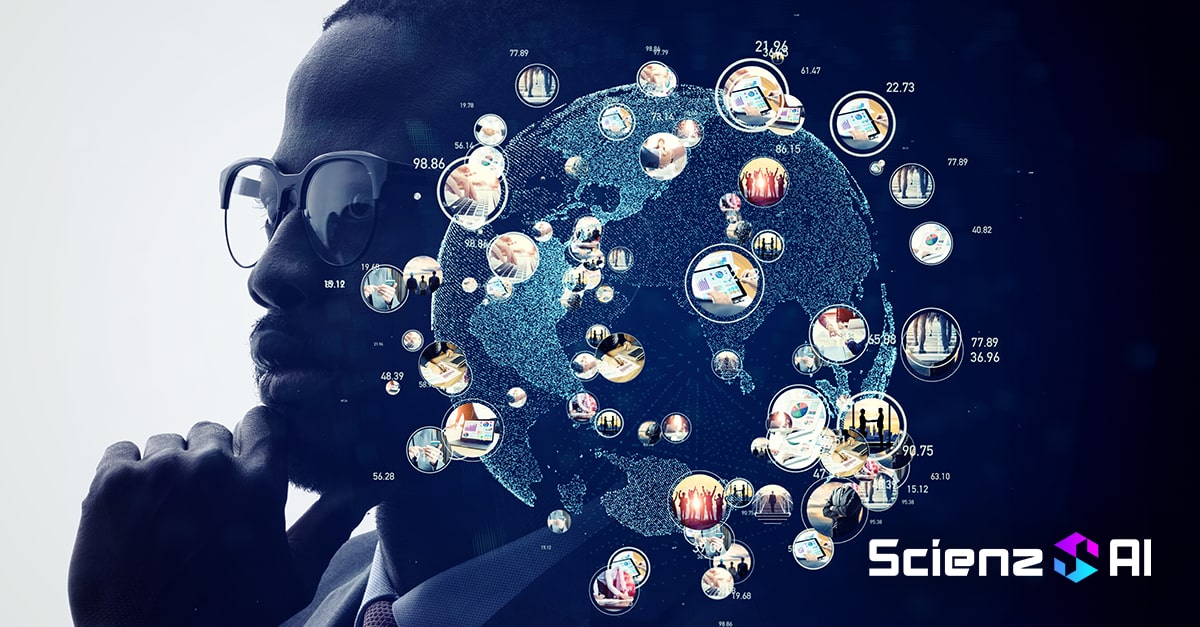In today’s heady world of marketing, diversity and inclusion are no longer just buzzwords, they are a critical component for brands and companies to stay relevant and responsive to their customers’ needs and demands.
In recent years, there’s been an unprecedented push for inclusive marketing, with unyielding expectations that marketing campaigns reflect a brand’s diverse customer base and make customers feel heard and seen. AI in marketing can be used to amplify diversity and inclusion efforts with CMOs and marketing leaders increasingly mandating their teams to use artificial intelligence tools to weave diversity and representation into the very fabric of their strategy.
The Drive for Inclusive Marketing
Inclusive marketing, also known as diversity marketing, requires marketers to represent various groups that have been historically underrepresented in mass media. The strategy can encompass a wide range of diversity types, from age and disability to gender and race. It can also comprise political beliefs, religion, and veteran status.
And customers increasingly demand diversity and inclusion from the companies they engage with.
In the United States, 70 percent of adult Gen Zers believe brands with a large target audience should promote diversity and inclusion, while the share fell behind two-thirds for Gen Xers and baby boomers. The matter also extends to relatability: two out of three U.S. adults favored brands hiring spokespersons who looked like them.
Then there’s the economic benefit. People are more likely to consider or purchase a product after seeing an ad they perceive as diverse or inclusive; 64% of survey respondents in 2019 said they took some sort of action after seeing an ad that they think is diverse or inclusive. Companies in the top quartile for ethnic and cultural diversity, too, outperform those in the fourth by 36 percent in profitability, according to a McKinsey report.
Diversity and inclusion in marketing offers the following benefits:
- Enhanced personalization – The act of tailoring ads to specific customer segments benefits from a diverse outreach, prompting marketers to understand their target audiences more deeply. Knowing the audience’s needs, challenges, and cultural nuances can lead to more effective campaigns, making the recipient of the messages feel recognized, valued, and welcomed.
- Better connection with millennials and Gen Z – As younger generations are more diverse than previous ones, they tend to respond positively to inclusive marketing. Inclusive campaigns pair well with initiatives geared toward social change, such as DEI efforts.
- Increased brand loyalty – Inclusivity initiatives can strengthen customer commitment, helping companies improve customer retention while slashing acquisition costs. Customer loyalty can withstand factors such as competitors offering lower prices or higher-quality goods or solutions. This is particularly crucial in the age of social media, when positive (or negative) brand experiences spread like wildfire through word of mouth.
- Culture of innovation – CMOs implementing diversity efforts and building diverse teams promote innovation and improved performance, equipping their marketers with diverse perspectives to tackle and solve problems.
AI in Marketing for Diversity Promotion
Where does AI come in?
When used the right way, AI can perform a full gamut of DEI-driven marketing initiatives. It can analyze marketing campaigns, recruitment processes, and communications to detect and decrease bias.
Generative AI, trained on diverse datasets, can promote inclusive marketing in multiple ways:
- Create culturally adaptive, highly relevant content for diverse audiences. This makes a marketing campaign appeal to a broader demographic in a more personalized way.
- Accurately translate product information and content into multiple languages, increasing the accessibility of products and services across the globe.
- Produce designs that adhere to accessibility standards, such as suggesting design changes that make websites or apps more usable for the differently able through colors or alternative text for images.
- Mirror audience diversity in human imagery found in marketing platforms, reflecting different genders, races, abilities, or cultures for diverse representation.
- Eliminate inherent biases in talent recruitment, specifically in screening CVs or resumes, to form diverse marketing teams.
AI also encourages a greater sense of data analysis and monitoring among marketing teams.
“AI cannot work effectively without clean and organized data,” Obele Brown-West, president of data intelligence platform Tracer, told AdAge. “In that regard, AI has already led to and will continue to lead to closer relationships between marketing analytics and data teams in order to get the full capability out of AI for marketing and creative purposes.”
Chief technology officer and AI advocate Adam M. Victor highlights the following AI in marketing tools that CMOs and marketing directors can explore:
- Topical Authority Advisor – A pioneering AI tool that sculpts content resonating with diverse audiences. Empowering creators to create content that understands and respects cultural nuances, it assimilates local cultural subtleties as well as customer trends and behaviors, turning them into bespoke content strategies. It also performs deep analysis, including analyzing user-provided URLs to dive into specific regional content and digital footprints.
- Seshat Scribe – An AI-driven SEO tool that infuses traditional SEO practices with cultural diversity practices and ethical considerations. In improving the online visibility of a travel company, for instance, Seshat Scribe guides users in creating culturally sensitive and informative content, including tip lists that honor local customs and practices, or feature sustainable travel advice.
- Golden RatioGPT – Beyond creating aesthetically pleasing images, this AI tool combines the Golden Ratio – which represents harmony and balance in art – and diverse representation and is programmed to avoid biases and stereotypes in the visuals it produces. Marketers can harness it for diverse visual storytelling through their digital ads, social media posts, or website visuals.
While there’s a long road ahead for diversity in the corporate landscape – women in tech hold only a quarter of all jobs while African-Americans comprise just 7 percent of the Silicon Valley workforce – GenAI and other AI tools can be invaluable allies in the marketing agenda, to be cost-effectively and creatively leveraged across future-forward marketing leadership and teams.
Related Readings
Gender Equality in AI: Women in Marketing and Tech Leadership Still Lacking
5 Steps for CMOs to Incorporate AI Into Their Marketing Strategy




